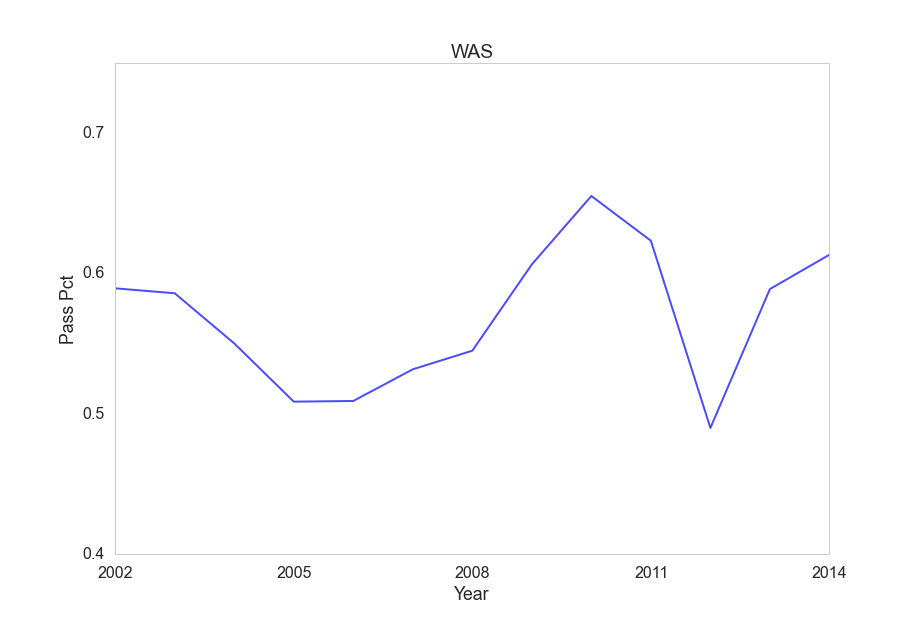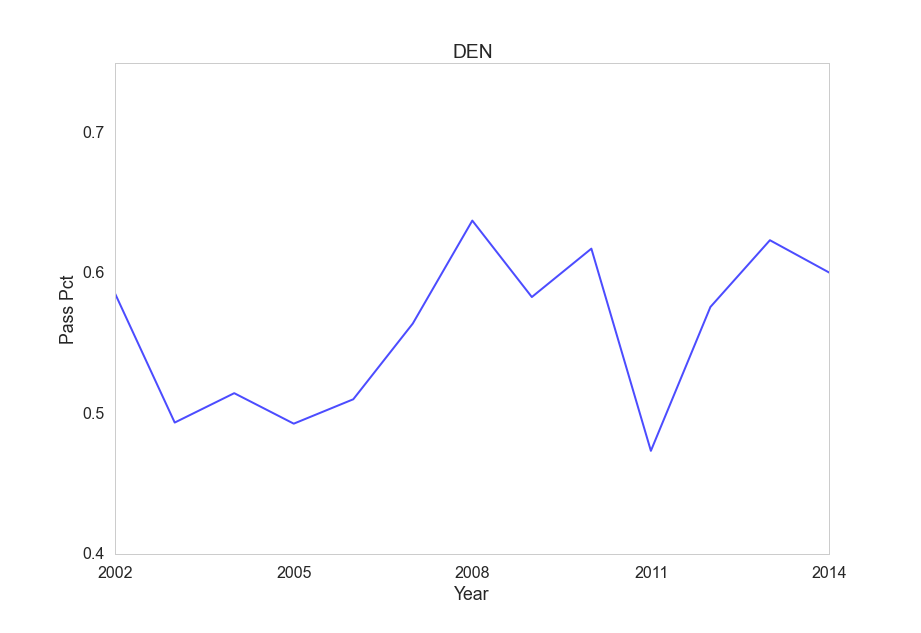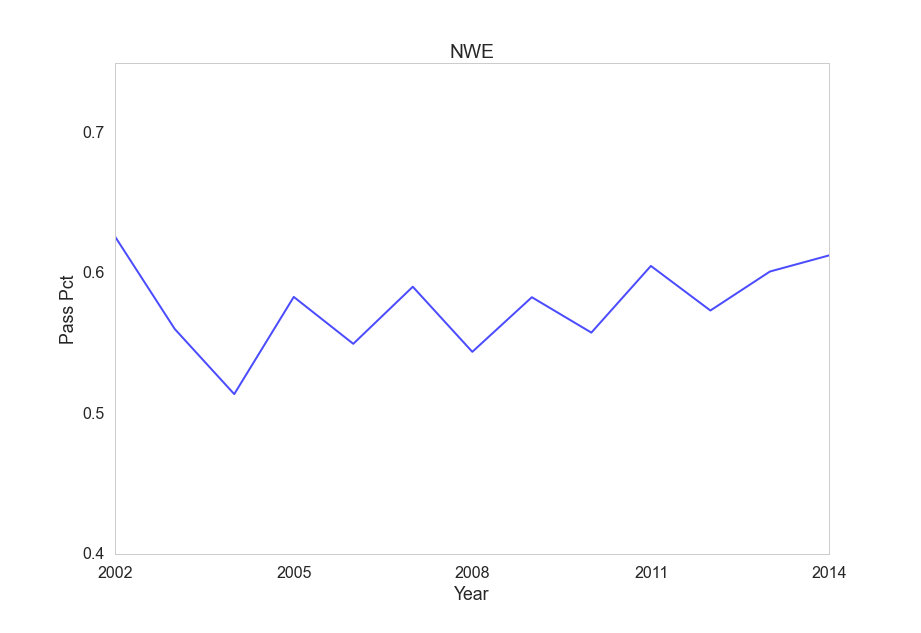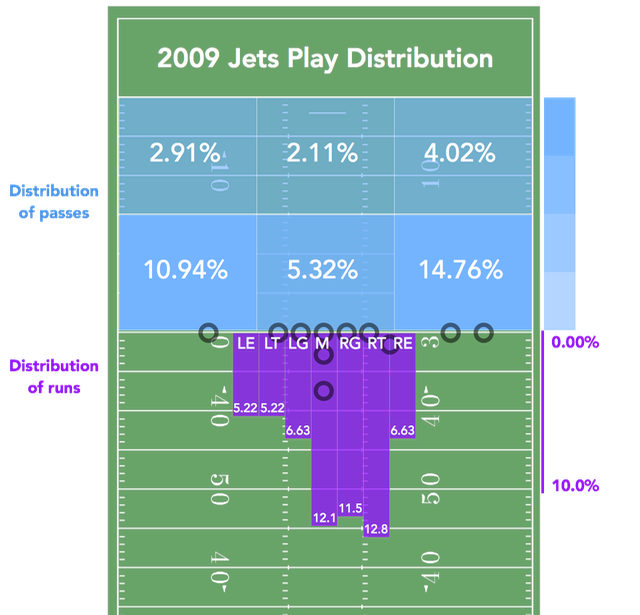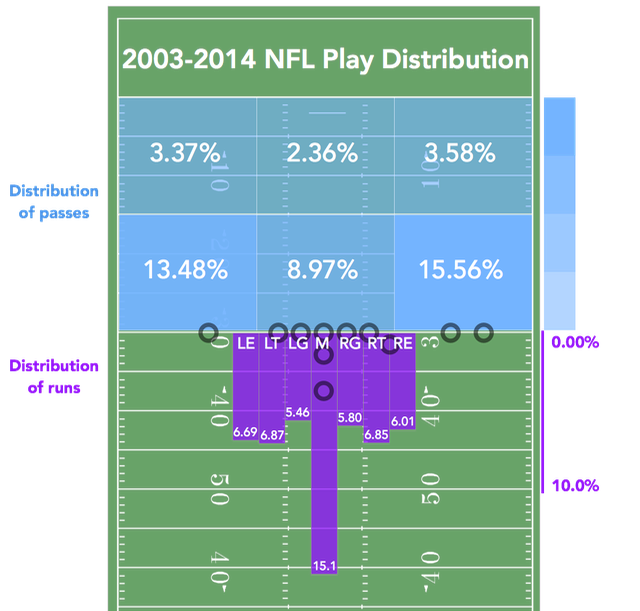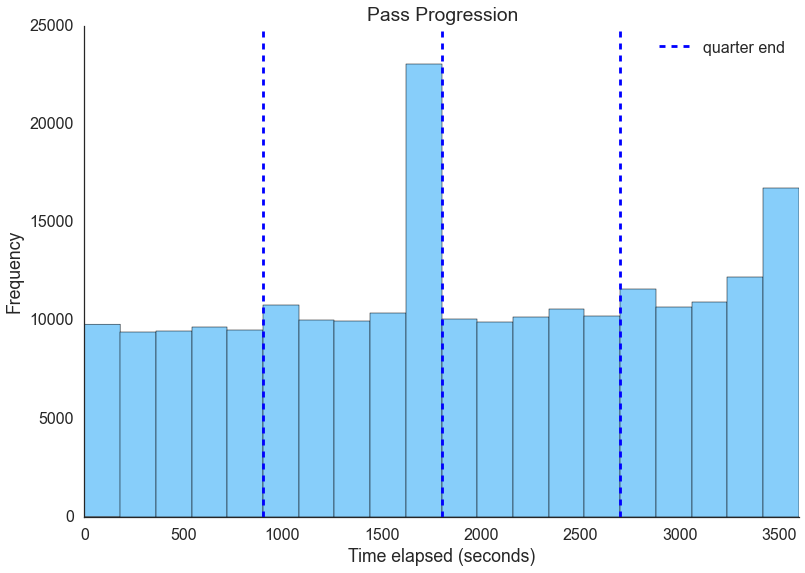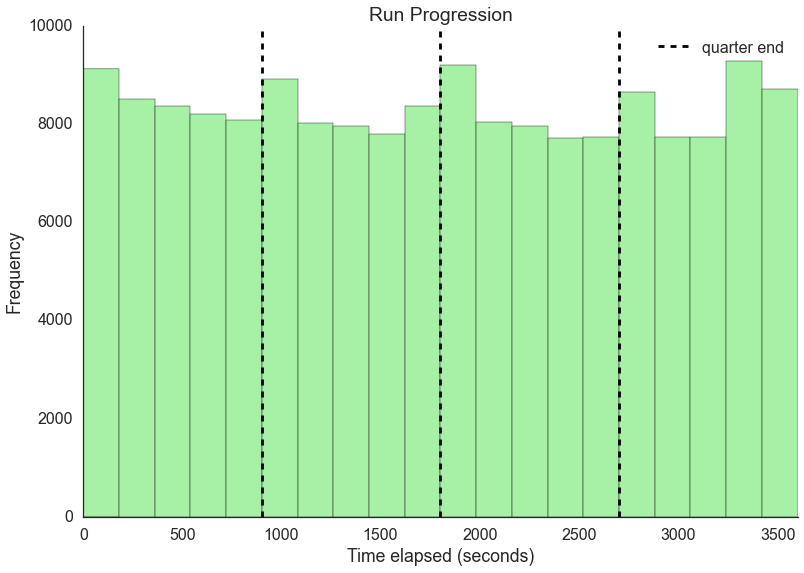Exploratory Data Analysis
Initial Analysis and Visualizations
One of the first features we considered for our model was a team’s prior passing percentage, since we expected pass-heavy teams to be more likely to pass on a play than run-heavy teams. Therefore, one of the first things we wanted to visualize was what this passing percentage looks like for each team and how it changes over time. The following plot shows this information.
Passing Percentages Over Time by Team
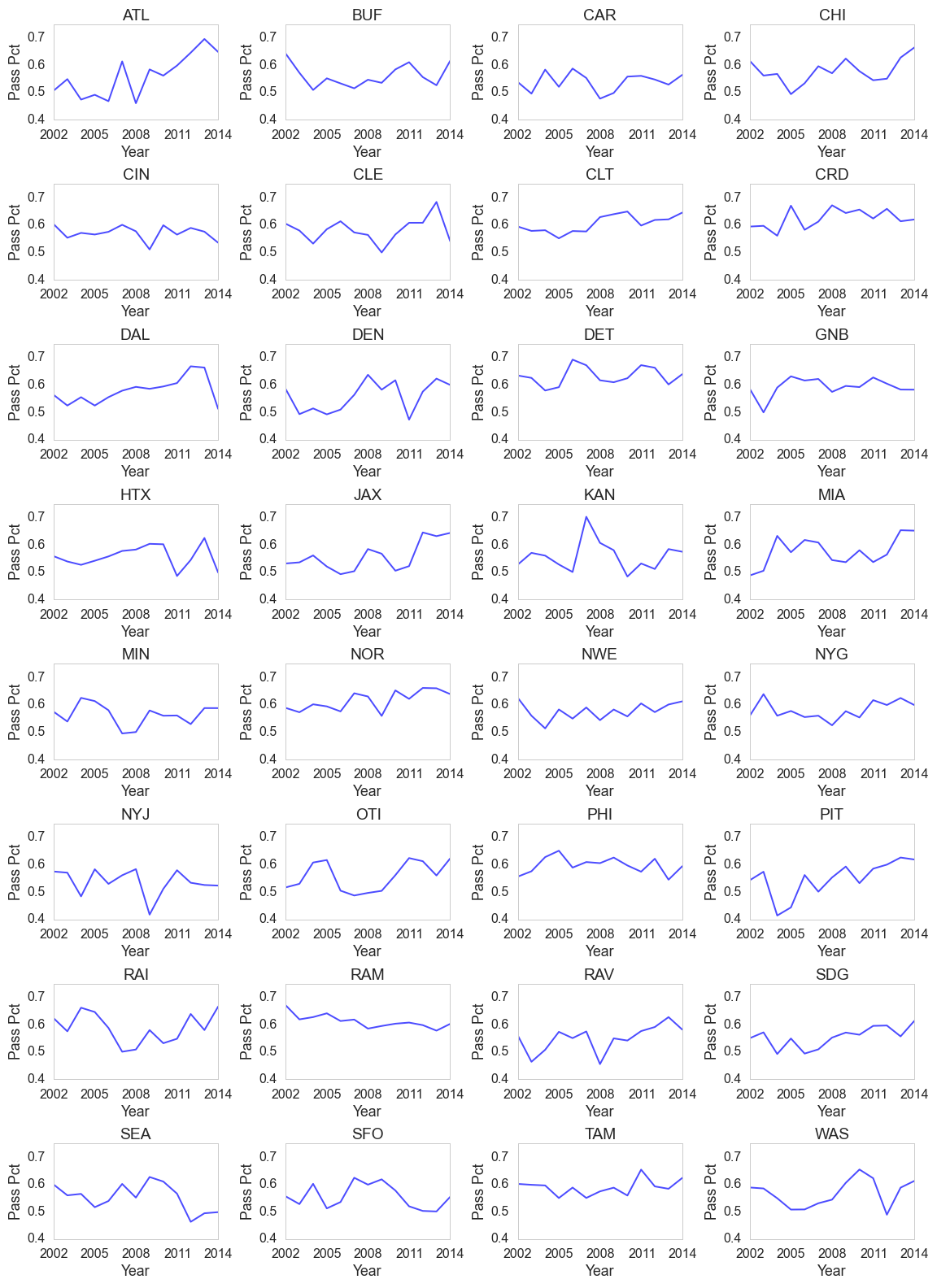
These plots also match up with what we might expect to see. Take the following few plots, for example:
Directional Breakdown
We were also interested in exploring depth/direction of passes and direction of rushes, so we looked at a few teams’ breakdowns in this regard. A few examples of these plots are below.
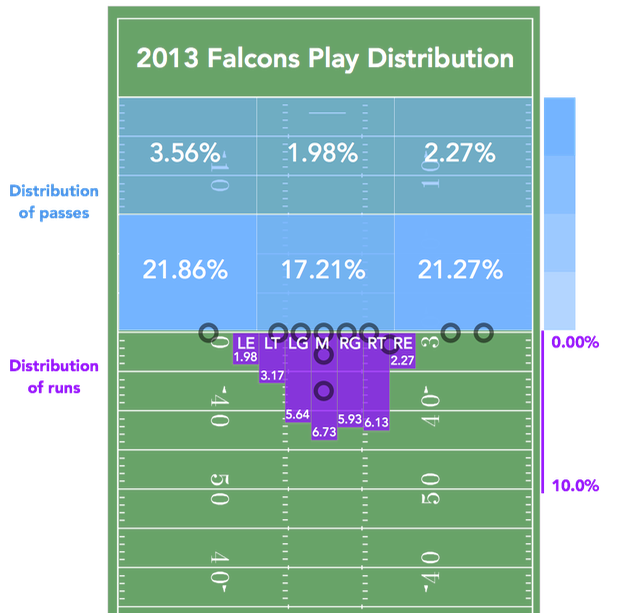
2013 Atlanta Falcons
Here we can see that the 2013 Falcons, one of the most pass-heavy teams in recent years, were running a lot of short passes.
Play Breakdown Throughout the Game
Another point of interest is how the breakdown of plays changes over the course of a game. Intuitively, we expected to see different playcalling within the last 2-3 minutes of a half than at the beginning of a half, since the time remaining in a half tends to change a team’s gameplan. To investigate this, we looked at the following plots.
Passing Percentage by Down
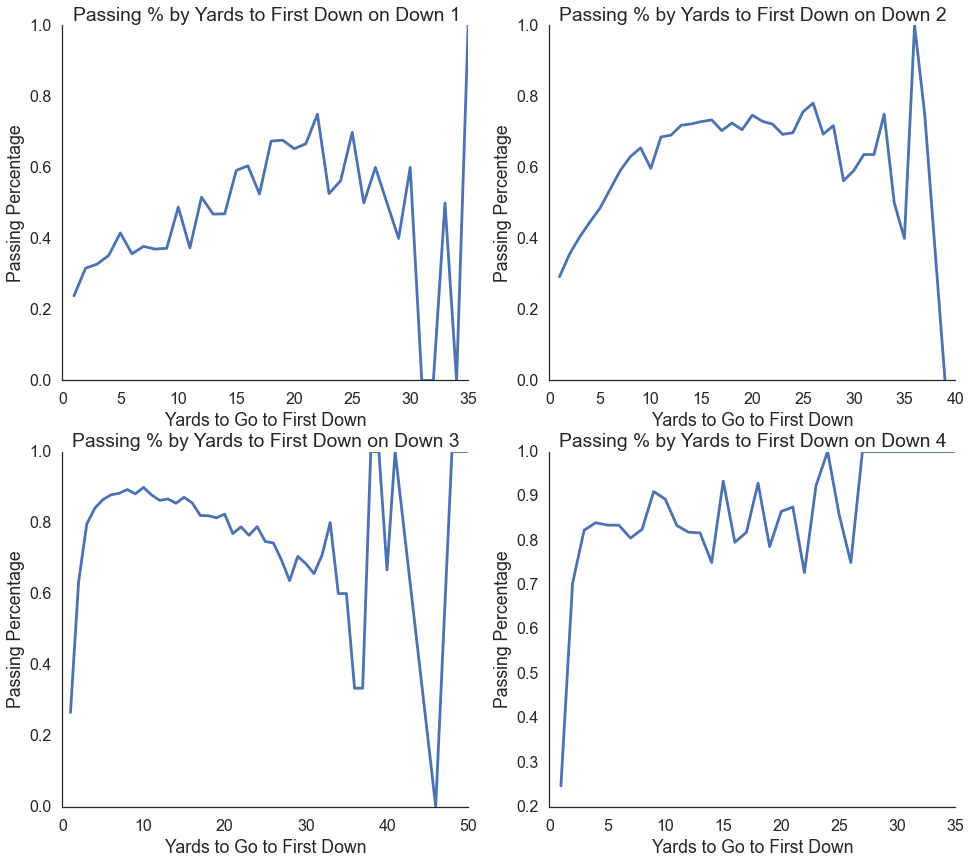
These plots show some fairly intuitive ideas. For example, teams tend to pass less on first down, but pass more if they have longer distances. Conversely, on third and fourth downs, when a conversion is more important, teams are more likely to pass, especially in longer yardage situations.
